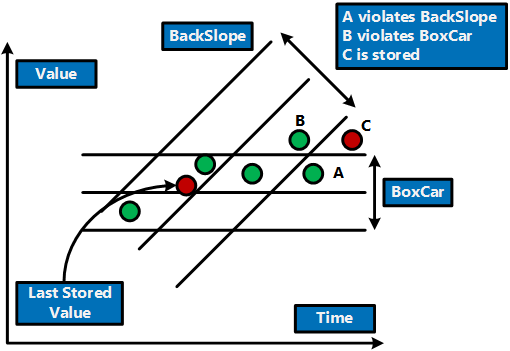When starting the execution of an application and receiving the first value notification for each one of the stored variables, a Storage stores this value obtained with Bad quality, and right after that with the sent quality, if it is Good. This occurs because when performing a query, users view that an interruption in Storage happened.
After that, as new values are obtained for variables, an algorithm for record checking interprets this sequence and decides whether each point must be stored or not. This algorithm, known as BoxCar/BackSlope, creates two variation bands (whose amplitude is given by this variable's dead band) of a stored point. The horizontal band (BoxCar) defines a common dead band verification. A second diagonal band (BackSlope) defines a variation upwards or downwards the dead band.
Therefore, if this variable is in a descending or ascending continuous derivative, it is only necessary to store the initial and final points on this straight line. So, an analog variable is only recorded if its value violates both horizontal and diagonal bands, or if there were a quality change, that is, this device was turned on or off.

Example of a BoxCar/BackSlope algorithm
This verification, however, only occurs for analog Fields. For digital and text Fields, a simple change in value or in quality is needed, such as a loss of communication, to store them.